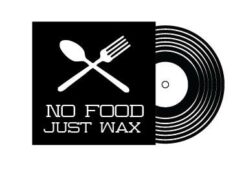Skip to content
- Acoustic – utilizing primarily acoustic instruments
- Atmospheric – utilizing textural layers of sound to enhance space, depth, and mood. ie. music with a lot of reverb or ambience
- Atonal – No central key or harmony; music focused on the sounds, textures and rhythms of the instruments but not the notes they play.
- Busy – a lot of melodies, sounds, or rhythms doing different things simultaneously
- Conceptual – based around a central idea, whether it be philosophical, musical, etc.
- Dense – a lot of instrumental layers and not much open space.
- Digital – Prominent use of a computer or digital instrumentation/processes to create the music.
- Dissonant – utilizing harmonies that clash or create tension
- Dynamic – utilizes a wide range of change on a certain musical dichotomy. For example, loud/quiet volume dynamics, density/sparsity dynamics, or fast/slow tempo dynamics.
- Electro-Acoustic – Utilizes acoustic instruments with electronic processes
- Fast
- Fuzzy – utilizes fuzz distortion on guitars or other instruments, especially prominent in psych-rock
- Groovy – a rhythmic feel that the listeners and musicians can both easily fall into; playing “in the pocket”. The rhythm is typically repetitive but has enough variation to make it feel alive. Often very danceable. Many different genres names refer to the type of groove they utilize, such as funk, swing, or rock.
- Headphone Album – albums that can be best appreciated with headphones, especially music that has a lot of stereo psychedelic effects or atmospheric sounds,
- Improvisation – music that incorporates unplanned performance or spontaneous interpretation to some degree
- Chordal Improvisation – Music is improvised over a composed chord progression. For example, straight-ahead jazz forms like bebop.
- Collective Improvisation – Created collectively and spontaneously; the musicians play off each other to take the music in new places. Each musician has their own freedom
- Free Improvisation – created on the spot without any planned composition or structure; music that is 100% improvised
- Modal Improvisation – Improvisation based on pre-specified modes or scales.
- Poly-Free Improvisation – utilizes a blend of free improvised sections, pre-planned structures
- Post-Improvisation – uses improvised recordings to construct compositional structures after the fact through editing, overdubbing, digital manipulation, etc.
- Solo Improvisation – a single musician spontaneously composing music as its being played
- Thematic Improvisation – improvisation based on a composed theme or melody
- Innovative – utilizing new methods or ideas
- Instrumental – no lyrics or prominent vocals (unless they’re used in a purely instrumental way)
- Live – recording of a live performance
- Lo-fi – recorded without the use of a professional studio, often at home with budget equipment such as cassette 4-tracks. Sometimes used as a stylistic tool and sometimes as necessity
- Loops – utilizes looping of instruments or sections through effects pedals or cut & paste techniques
- Lyrical – Albums where lyrics are central
- Melodic – utilizes prominent melodies
- Minimalist– utilizes repetition with only gradual variation
- Monolithic – Instrumentation combines uniformly to sound like one large mass.
(For example, three guitars playing the same heavy riff together) - Odd Time Signatures – utilizes time signatures other than 4/4 or 3/4
- Orchestral – arrangements include string or horn orchestration
- Noisy – utilizes noise through feedback, recording quality, or effects.
- Percussive – instruments are played in a way that emphasize percussive qualities like timbre and rhythm, often with a quick attack and decay. For example, digital glitches, muted guitars, or actual percussion instruments.
- Polished – high-fidelity production, very cleaned up sound
- Polyrhythmic – utilizes multiple rhythms against each other
- Progressive: used to define music with evolving, forward-moving structures (rather than just verse-chorus-verse)
- Raw – Unrefined, unfiltered expression or performance, unworried about technical “correctness” or perfection.
- Repetitive – Heavy use of repetition
- Simple – uncomplicated compositions or instrumental performances
- Slow
- Sparse – unadorned music that primarily focuses on one or two instruments; utilizing a lot of open space; opposite of dense.
For example, an album with just an acoustic guitar and vocalas and no arrangements. - Studio-as-an-Instrument: albums with heavy post-production; bringing the studio into the compositional process
- Technical – The instrumental performances and/or compositions are very skilled on a technical level,
- Thematic – Music based around a prominent melodic or rhythmic motif
- Instrumentation
- Acoustic – Primarily acoustic instruments
Like this:
Like Loading...
